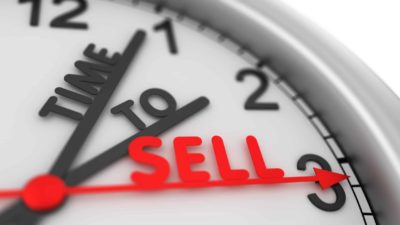Man, last week was a doozy, huh?
The ASX fell 2.3% on Friday, alone (measured by the All Ordinaries Index (ASX: XAO).
It was down almost 3% for the week.
And it's been a tough month.
From its early January high, the Aussie market is down by more than 5%.
If you own tech stocks, you likely know the ride has been rougher.
The US NASDAQ, from which our tech companies take their lead, is off more than 10% since late December.
And some companies are down even more, including the formerly high-flying Afterpay, which had accepted a takeover deal from US payments business Square — now called Block Inc (NYSE: SQ) — early last year. And because that deal was payable in Square shares, the Afterpay share price fell just as Square did, turning a ~$150 takeover price into a $66 share price just before it stopped trading on the ASX.
In short, there are some — most — ASX company shareholders nursing some red in their portfolios right now.
Why?
The causes are many and varied. Usually, inflation and interest rates bear the brunt. And most of that is US-based. Inflation there touched an annual rate of 7% just recently, prompting the US central bank, the Federal Reserve, to talk about raising interest rates there, sooner rather than later.
Here? We don't have the same degree of inflation worries, but the direction is the same. Many economists are now predicting that instead of late 2023 or early 2024, the Reserve Bank might increase the official cash rate by the end of the year – perhaps as early as August.
Now, I won't bore you with the algebra on a Monday morning. But the bottom line is that interest rate movements should have an impact on asset prices. Higher returns on cash make other assets less attractive by comparison (and lower interest rates make other assets more attractive).
But here's an important point to remember: That doesn't mean share prices can't or won't rise. It just means that they'll be lower than they would have been if rates were lower.
And so?
Well, I have to tell you, I have no idea how far my portfolio has fallen over the past couple of months.
I've learned that obsessive checking of share prices, and my portfolio's value, has nothing to offer me, in terms of improving my investment returns. And, indeed, is probably going to lead me astray.
The temptation to "don't just sit there, do something" is very strong if you keep checking share prices. And it's magnified when the market is falling.
Moreover, though, I've invested in my shares for the long term. A timeframe measured in years.
Why would I bother checking hourly? Why would I assume that market volatility is a time to do anything differently?
If I owned a cafe, and takings were down 15% one week because it was raining, I'm 100% sure I wouldn't be looking to sell it by Sunday.
I own my house. If the place next door sold cheaply because it was a mortgagee sale, or because there was a temporary drop in house prices, I'm not going to sell mine and find a cardboard box to live in.
And if I own shares, and I know that history suggests that company profits tend to rise, and that share prices tend to rise, over the long term (about 10% per annum, over the very long term), why would I try to play silly buggers over short-term volatility?
It would, by any objective measure, be nuts.
"Ah", some people say "but there's a bear market coming".
Is there?
I mean, it's possible, sure. But my crystal ball is broken.
And we went through the fastest bear market in history in early 2020, and many, many people were left waiting to get back into the market while share prices rose. And rose. And rose.
You really want to gamble your financial future on being able to sell, and buy back in, at the right time and price?
Are you really that good?
Is anyone?
I don't think so.
And, even if you thought you were?
If the stock market has historically offered an average return of 10% (let's say somewhere between 9% and 11% to be safe) – and if you think it's likely that the forces of capitalism aren't going anywhere soon – do you really want to eschew the potential of that sort of gain, while you try to time the market?
Sure, maybe you get it right and make a few more percentage points.
Or, like some of the smartest investors around in 2020, you miss out on 20%, 30% or 40% gains because you're not invested when the recovery comes.
Truly, I cannot fathom why people play that game.
Hubris? Arrogance? Greed?
I'm not sure.
Me? I try to remain humble in success, and philosophical through loss.
I know I can't time the market.
And I think that while history doesn't repeat, it does – as Mark Twain said – rhyme,
So here's what I do:
I remain almost always fully invested. Yes, that means I don't have the cash to invest when the market falls. But – and here's the thing – it means I get full value for my money when the market rises.
And because the market tends to go up, more than down…
And because the market tends to go up… and up… and up… over time…
I think that gives me the best chance of the best possible long term compound returns.
I've just learned to ride the waves.
I don't love it – seeing my portfolio fall isn't fun.
But I've learned to live with it.
I think you should, too.
When was the worst time to sell over the last 40 years?
Well, almost any time, given the market is near an all-time high.
But the very worst times?
During the '87 crash. During the dot.com crash. During the GFC. During the COVID crash.
And over that time?
Well, Vanguard tells us that in the 30 years to June 30, 2021, a hypothetical $10,000 invested in the ASX 200 turned into $160,498.
By doing nothing.
Literally nothing, other than letting share prices compound and reinvesting dividends.
Despite the dot.com crash, and the GFC and COVID.
Despite the almost-constant reporting of the pundit who was forecasting the next crash.
Despite constant volatility.
As the ASX fell 2.33% on Friday, I tweeted:
I've said this before, and it's not an original thought or metaphor(s), but…
Volatility is the ticket to the dance. It's the price of admission.
It makes the long term returns possible
And:
The #ASX is down today.
Me?
I'm buying.
Not because I know this is the bottom, but because companies I liked the price of yesterday are cheaper today.
I'm not backing up the truck. I'm just putting my dollar-cost-averaging money to work.
In other words?
Business as usual.
I'm investing in things I think will be worth more in 5 years. And much more in 10 years.
Isn't that what we all should be doing?
And doesn't that make the obsessive stock-watching and hyper-activity look, well, just a little silly?
I think so.
To finish, an anecdote I've shared before.
I'm glad I can invest and write. Because as much as I like doing it, I'd have never made it as a carpenter.
But I have always vividly remembered a poster that was in our Year 7 Woodwork room when I was at school:
"Don't be like a rocking horse… plenty of movement, but no progress"
Doesn't that sound like most days on the ASX?
Movement can be observed daily.
But progress – real progress – comes over years and decades.
I have no idea what the stock market will do next.
Neither does anyone else (and if they say they do, they're lying to you… or themselves).
And so?
I look for wonderful businesses, available at good prices. I aim to hold them for years, preferably decades.
And I treat declines, no matter how painful, as a rainy week at the cafe.
If the coffee, the food and the service are good, customers and profits will return.
And if we own quality businesses, and dollar cost average, I have a high degree of confidence that left alone, we'll do very well over the long term.
Or as Charlie Munger pithily put it: "The first rule of compounding is to never interrupt it unnecessarily."
If you're smarter than Charlie Munger, then feel free to do it differently. And if you're not (and trust me, as smart as you are, you're not smarter than Munger), I'd take his advice.
Keep your eyes on the long-term prize.
Fool on!









